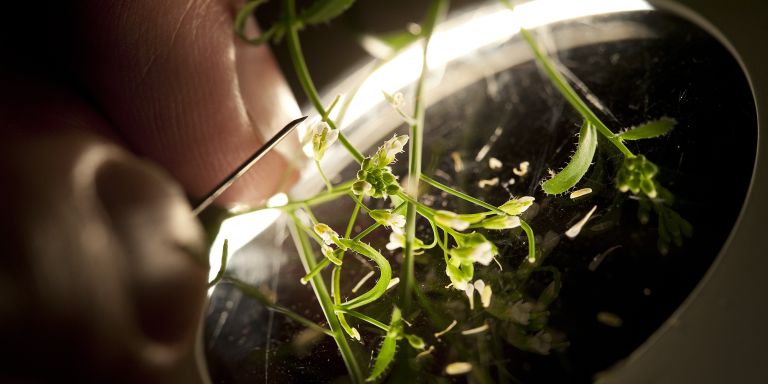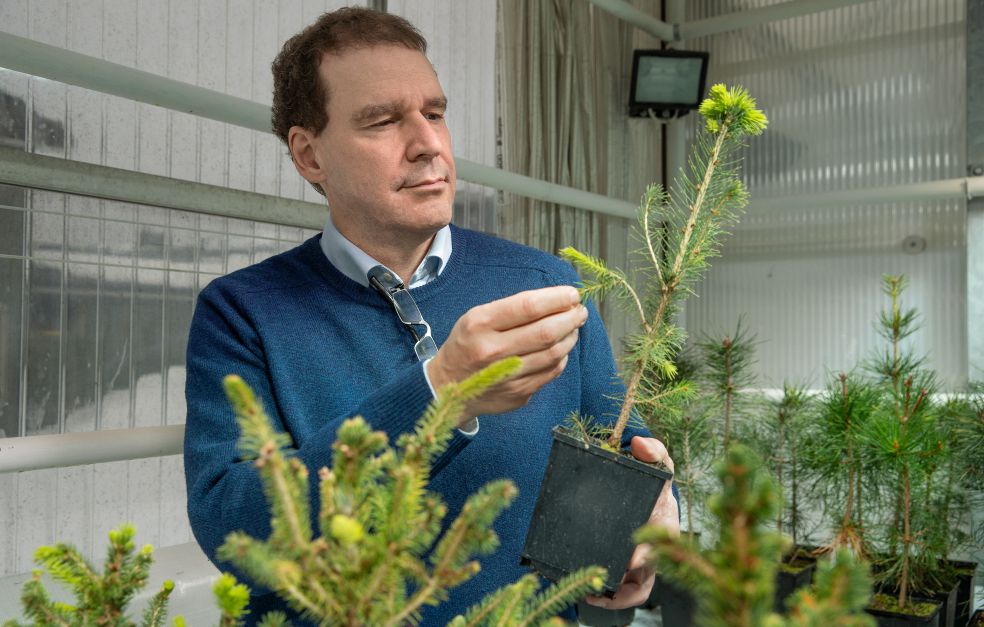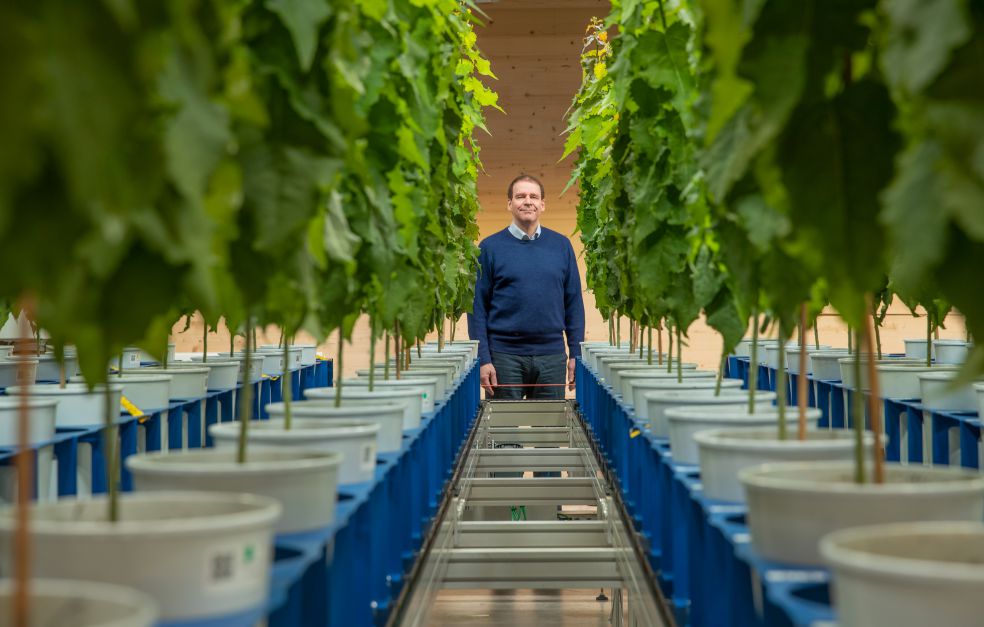Using an unsightly weed, Ove Nilsson has given the world new knowledge about plants and the blooming and budding of trees. Among other aspects, he has shown that a gene can cause a tree to bloom after a few months instead of after the usual 10-15 years. This is knowledge that has now begun to be used in tree cultivation.
Ove Nilsson
Professor of Forest Genetics and Plant Physiology
Wallenberg Scholar
Institute:
Swedish University of Agricultural Sciences
Research field:
Development biology of plants with an emphasis on the mechanisms that control the plant's blooming
The weed is the thale cress, or Arabidopsis thaliana, which is its Latin name. It is an annual that grows throughout Sweden. With his research, Ove Nilsson has contributed to the thale cress becoming an accepted model plant, the plant-biology equivalent of the fruit fly. Since the genome is relatively basic, the researchers were able to read it early on and now all genes are also mapped.
Thale cress blooms as early as two weeks after sprouting whereas it takes a tree 10 to 15 years to bloom. Despite this, there are similarities.
“I have shown that knowledge from the thale cress can be applied to trees and that blooming can be controlled,” explains Ove Nilsson.
Spruce in the limelight
As a Wallenberg Scholar, Ove Nilsson, Professor of Forest Genetics and Plant Physiology at the Swedish University of Agricultural Sciences (SLU) and Umeå Plant Science Centre (UPSC), will continue his research track, but also expand it to include spruce.
“The spruce has proven to be completely different from a blooming perspective. Because it is believed to have changed relatively little from a genetic perspective in the past 200 million years, it will be even more interesting.”
Studying the spruce means being able to go back in evolution. By studying the chain of spruce, aspen and thale cress, Ove and his colleagues will get a better idea of how the function of the genes has developed.
“There is also an important application, if we get the spruce to bloom earlier, we can shorten the time for plant breeding, which can enhance the efficiency of the spruce's characteristics”
But he confirms that there is a ways to go before this can be realized at the same time that the possibilities increase through the knowledge that comes from the mapping of the spruce's genome, a project also led by Ove Nilsson that is financed by the Knut and Alice Wallenberg Foundation.
Genetics, daylight and temperature
At UPSC, which is jointly operated by SLU and Umeå University, there are greenhouses and climate chambers that make it possible to simulate various seasons and regulate the plants' daylight. UPSC also has the world's largest biobank for transgenic plants.
“They are very important tools for me. I study the length of the growth season, when plants bud in the autumn and when they burst in the spring.”
The FT gene is of central importance in Ove Nilsson's research.
“It is the FT gene that controls the blooming period depending on the ambient signals it receives,” explains Ove Nilsson.
The most important signals are daylight and temperature. Many plants that bloom in the spring need a cold period to not begin blooming again as early as the autumn.
Research breakthrough with winter beet
Many crops have been cultivated into winter crops, to be able to use the entire growth season, but one of the ones that has not worked is the sugar beet.
Ove Nilsson's research team succeeded in cultivating a winter beet in cooperation with a company. Something that also became a basic research breakthrough.
“The key was that we succeeded in understanding how the blooming was controlled. Compared with the thale cress, it was an entirely new principle.”
The gene, the FT gene, that controls the blooming period proved to be doubled in the sugar beet. While the one gene stimulated blooming, the other inhibited it.
“It is the balance between them that determines when blooming occurs.
By replacing amino acids, we succeeded in switching the function between the genes, and by making the "brake gene" more active, we achieved a beet that can be planted in the autumn, which can lead to major production increases by the growth season being better utilized.”
Unexpected discovery
It was also the FT gene that was behind the discovery that the blooming in trees can also be controlled as desired.
“We discovered that the gene became more active the older the tree became. When we tried to turn it on right away, in an aspen during the tree's growth, it proved to have the same effect as in the thale cress, it started the blooming.”
Ove Nilsson and his group then placed the aspens in a climate chamber with autumn light since they wanted to get them to enter hibernation and bud. But then something unexpected happened.
“The trees continued to grow and refused to bud. It was the first indication that the FT gene does something more. Since its activity is controlled by the length of the day, it also controls when the trees stop growing and bud in the autumn.”
The gene has a similar function in other plants. By it being controlled by the length of the day, it also, for example, controls when certain kinds of potatoes form their tubers.
“It turned out that the FT gene is linked to all processes that are regulated by the length of the day. For trees, it is extremely important to survival that the length of the day controls when they bud.”
An aspen in Germany buds when the daylight is shorter than 15 hours while in Umeå it already buds at 21 hours.
“A tree that is moved from Germany to Umeå does not survive the winter because it does not receive the signal for the winter at the right time,” confirms Ove Nilsson.
Now, he wants to map the FT gene's exact function.
“We want to go further and find other similarities and differences between blooming and budding since they are controlled by the same gene.”
Text Carina Dahlberg
Translation Semantix
Photo Magnus Bergström






